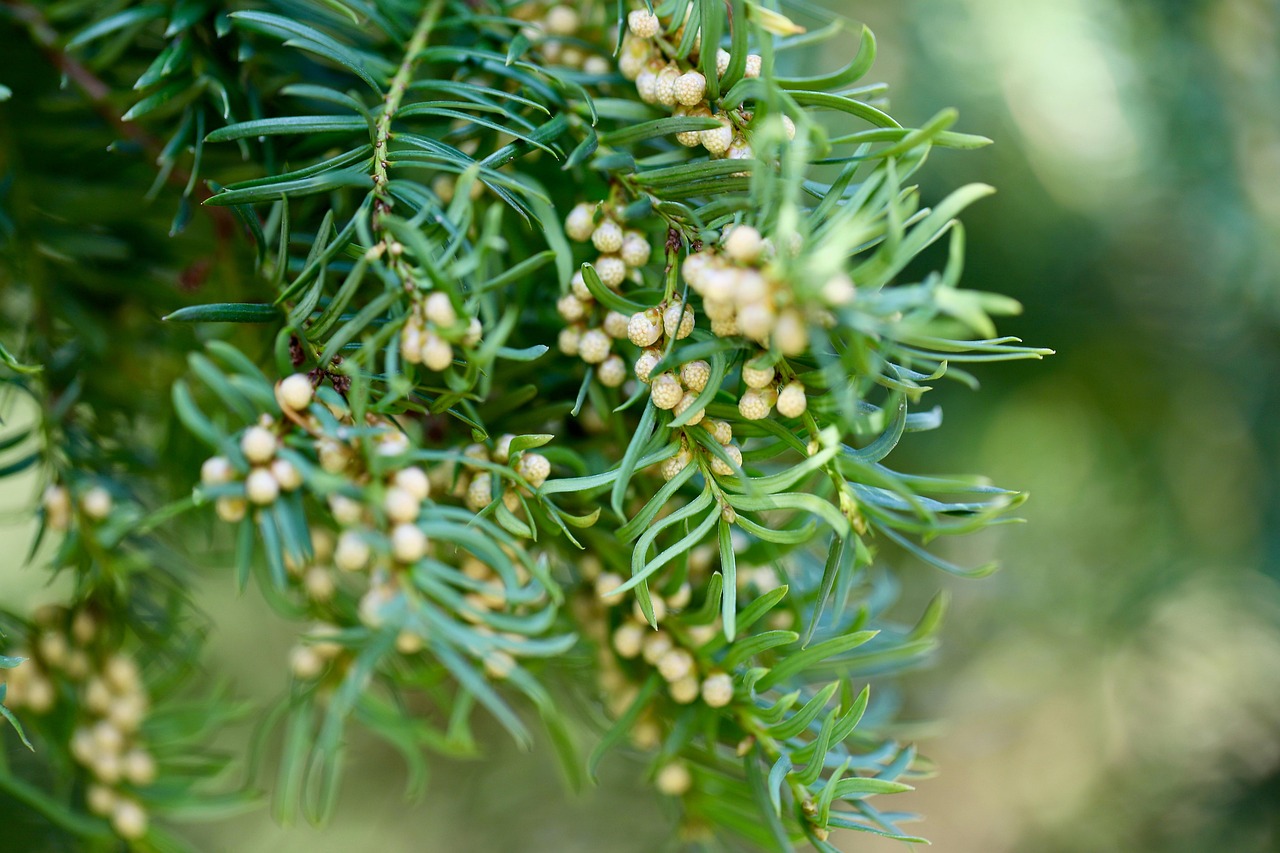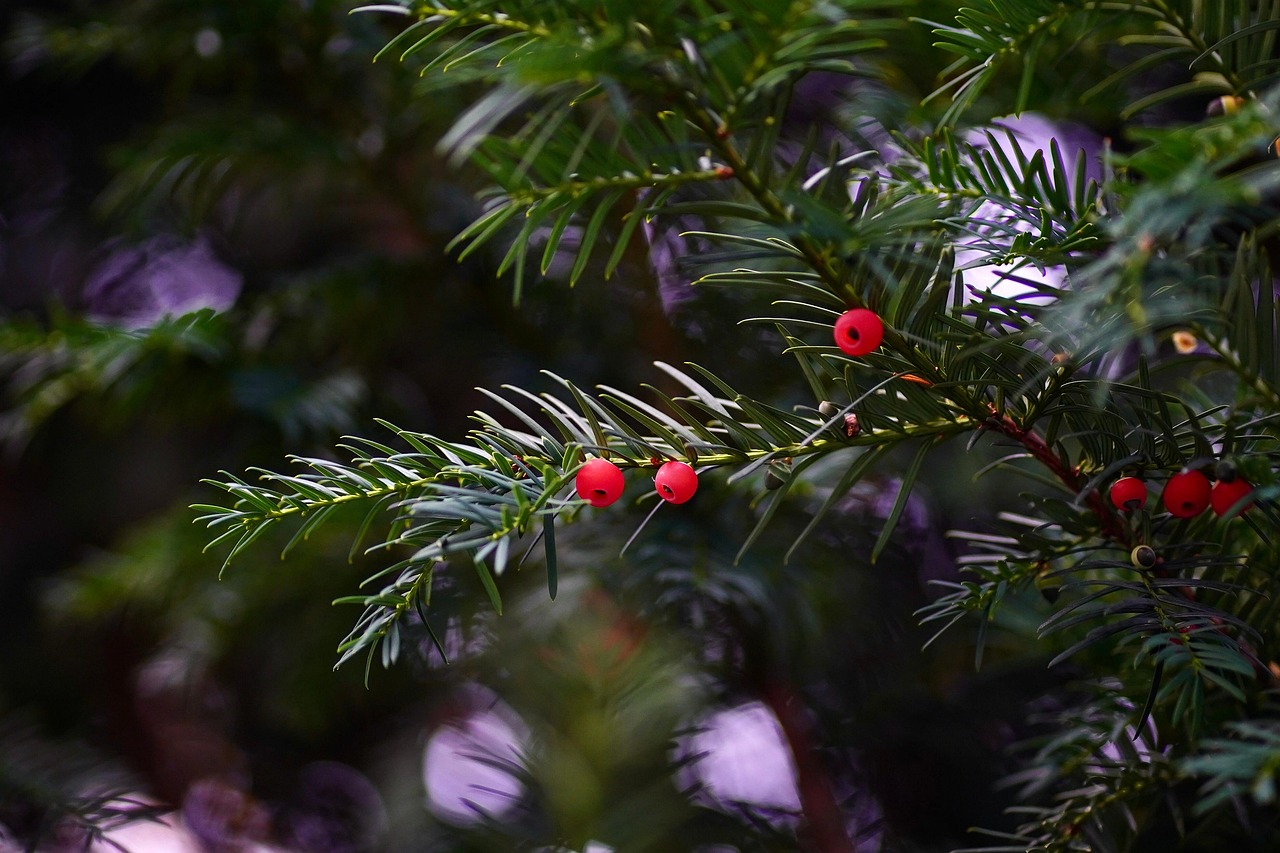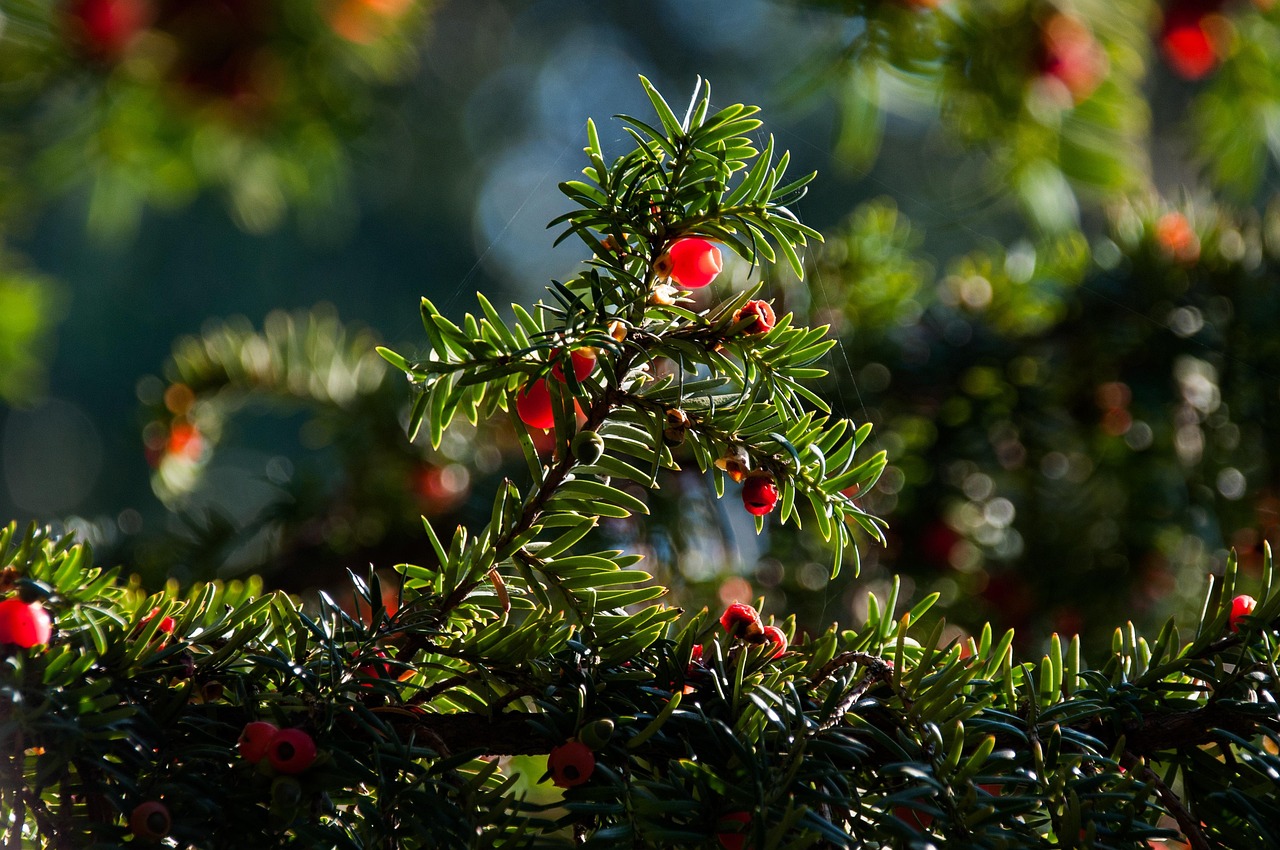Yew tree pruning is essential for maintaining the health and structure of the tree. Pruning encourages healthy growth, enhances the tree’s aesthetic appeal, and prevents overcrowding. It is best done in late winter or early spring before new growth begins.
Understanding Yew Trees
Yew trees are popular choices for gardens and landscapes due to their dense foliage and evergreen nature. They belong to the Taxaceae family and are known for their longevity. Yews can be shaped into hedges, topiaries, or left to grow naturally. Their adaptability to various soil types and climates makes them a favorite among gardeners.

One of the key features of yew trees is their ability to thrive in both sunny and shady environments. However, proper care, including timely pruning, is crucial for ensuring they reach their full potential. Pruning not only helps maintain their shape but also encourages bushier growth and minimizes the risk of disease.
Why Prune Yew Trees?
Pruning yew trees serves multiple purposes. Here are some of the primary reasons why you should consider regular pruning:
- Encourages Healthy Growth: Pruning removes dead or diseased branches, allowing healthier branches to flourish.
- Maintains Shape: Regular pruning helps keep the tree’s shape tidy and manageable.
- Increases Air Circulation: Thinning out dense areas promotes better air circulation, reducing the risk of fungal diseases.
- Enhances Aesthetic Appeal: A well-pruned yew tree looks neater and more attractive in your landscape.
- Stimulates New Growth: Cutting back encourages new shoots to emerge, resulting in a denser appearance.
When to Prune Yew Trees
The timing of yew tree pruning is crucial for optimal results. It is generally recommended to prune yews during late winter or early spring before new growth starts. This timing allows for recovery before the growing season begins. However, light pruning can also be done in late summer if necessary.

Here are some guidelines for timing your yew tree pruning:
| Season | Best Practices |
|---|---|
| Late Winter | Perform major pruning when the tree is dormant. Remove dead or diseased wood. |
| Early Spring | Shape the tree as new growth starts. Focus on thinning out crowded areas. |
| Late Summer | Light pruning can be done to maintain shape but avoid heavy cuts. |
Tools Needed for Pruning Yew Trees
Having the right tools is essential for effective pruning. Here are some recommended tools you should consider using:
- Pruning Shears: Ideal for cutting small branches up to ¾ inch thick.
- Loppers: Useful for larger branches that are too thick for shears.
- Saws: A hand saw or a reciprocating saw can be helpful for very thick branches.
- Gloves: Protect your hands from cuts and scratches while working.
- Pole Pruner: This tool allows you to reach high branches without a ladder.
Steps for Pruning Yew Trees
To achieve the best results when pruning yew trees, follow these steps:

- Assess the Tree: Before you begin, examine the tree to identify any dead, diseased, or overlapping branches.
- Select Your Tools: Gather all necessary tools and ensure they are clean and sharp.
- Start with Dead Wood: Remove any dead or diseased branches first to promote health.
- Thin Out Crowded Areas: Cut back branches that are overcrowded to improve air circulation.
- Shape the Tree: Trim back any branches that disrupt the desired shape of the yew.
- Cleansing Cuts: Make clean cuts to minimize damage to the tree. Avoid tearing bark.
Following these steps will help ensure your yew trees remain healthy and well-structured, allowing them to thrive for years to come. Regular maintenance through pruning is key to achieving a beautiful landscape feature with these remarkable trees.
Understanding Different Types of Yew Trees
Yew trees come in several species, each with unique characteristics and growth habits. Knowing the type of yew you have is vital for effective pruning. Common species include:
- English Yew (Taxus baccata): Known for its dense foliage and slow growth, this species is often used for hedges and topiary.
- Japanese Yew (Taxus cuspidata): This variety grows faster than the English yew and has a more upright form, making it suitable for various landscapes.
- Western Yew (Taxus brevifolia): Native to North America, this species is also slower growing and often found in forests.
- Chinese Yew (Taxus chinensis): This variety is similar in appearance to the English yew but is more tolerant of different soil conditions.
Each type of yew tree has specific needs and growth patterns. Understanding these differences will help you tailor your pruning techniques accordingly.

Pruning Techniques for Yew Trees
Different pruning techniques can be employed based on your goals and the species of yew tree. Here are some effective methods:
1. Thinning Pruning
This technique involves selectively removing branches to improve air circulation and sunlight penetration. It is particularly beneficial for dense yews. To perform thinning pruning:
- Identify crowded areas with overlapping branches.
- Choose branches to remove that are weak or poorly positioned.
- Make cuts at the branch collar for natural healing.
2. Shearing
Shearing is often used for hedges to create a uniform shape. This method involves trimming the outer foliage to maintain a compact structure:
- Use sharp hedge shears for clean cuts.
- Work from the bottom up, ensuring the top is narrower than the bottom.
- Avoid cutting into old wood as it may not sprout new growth.
3. Renovation Pruning
For older or overgrown yews, renovation pruning may be necessary. This method rejuvenates the tree by significantly reducing its size:
- Begin by assessing the overall shape and health of the tree.
- Remove up to one-third of the height, cutting just above healthy buds.
- This technique should be done gradually over a few years to avoid shocking the tree.
Common Mistakes to Avoid When Pruning Yew Trees
Pruning can be detrimental if not done correctly. Here are common mistakes to avoid:
- Over-Pruning: Removing too much foliage can stress the tree and hinder its growth.
- Poor Timing: Pruning at the wrong time can lead to sap loss and disease susceptibility.
- Tearing Bark: Making jagged cuts can damage the tree. Always use sharp tools.
- Ineffective Cuts: Failing to cut at the correct angle can hinder healing. Always cut at a slight angle just above a bud.
Aftercare Following Pruning
Once you have completed the pruning process, proper aftercare is essential for recovery:
- Watering: Ensure the tree receives adequate water, especially during dry spells. This helps reduce stress.
- Mulching: Apply a layer of mulch around the base to retain moisture and suppress weeds.
- Monitoring: Keep an eye on the tree for signs of stress or disease. Look for discoloration or wilting leaves.
- Nutrient Supply: Fertilize with a balanced fertilizer in early spring to support new growth.
Pest and Disease Management in Yew Trees
Pests and diseases can impact yew trees if not managed properly. Here are some common issues and prevention tips:
| Pest/Disease | Description | Prevention/Treatment |
|---|---|---|
| Yew Scale | A small insect that attaches to branches, sucking sap and causing yellowing. | Use horticultural oil or insecticidal soap to control infestations. |
| Cankers | Disease that creates sunken areas on branches, often leading to dieback. | Prune affected areas immediately and avoid wounding healthy wood. |
| Root Rot | A fungal disease affecting root health, leading to wilting and yellowing leaves. | Avoid overwatering and ensure proper drainage in soil. |
By being aware of these issues, you can take proactive steps to protect your yew trees from potential threats. Regular maintenance and monitoring will go a long way in ensuring your yews remain healthy and vibrant.
Advanced Pruning Techniques for Yew Trees
As you gain experience in pruning yew trees, you may want to explore more advanced techniques. These methods can help achieve specific shapes and encourage robust growth patterns. Here are some advanced pruning techniques you might consider:
1. Espalier
Espalier is a technique where trees or shrubs are trained to grow flat against a wall or fence. This method can be applied to yew trees to create a striking visual element in your landscape. To create an espaliered yew:
- Select a young yew tree with flexible branches.
- Install a trellis or wires on a wall or fence.
- As the tree grows, gently tie the branches to the structure while pruning them to maintain the desired shape.
- Regularly prune to ensure the tree stays flat and healthy.
2. Topiary
Topiary involves shaping the foliage of a plant into decorative forms. Yew trees are excellent candidates for topiary due to their dense growth. Here’s how to create a topiary:
- Choose a healthy, well-established yew tree.
- Decide on the shape you want to achieve (e.g., ball, spiral, animal shapes).
- Begin by trimming the outer foliage to form the basic shape.
- Continue to refine the form over several growing seasons, ensuring that you do not cut into old wood.
Seasonal Considerations for Pruning Yews
Seasonal conditions can significantly influence how and when you should prune your yew trees. Understanding these factors can enhance the effectiveness of your pruning efforts:
Spring Pruning
Pruning in early spring can encourage vigorous growth. However, it is important to be cautious:
- Timing: Prune just before new growth begins to avoid removing emerging buds.
- Focus: Prioritize removing dead or damaged branches and thinning crowded areas.
Summer Pruning
Light pruning during summer can help manage growth and maintain shape without stressing the tree:
- Aim: Focus on shaping and removing any undesirable new growth.
- Caution: Avoid heavy cuts as this can shock the tree during its active growing period.
Autumn Pruning
Pruning in autumn is generally not recommended as it can expose the tree to cold damage. However, light maintenance can be performed:
- Removal: Clear away any dead or diseased branches to prevent winter damage.
- Avoid Cuts: Do not perform heavy pruning; wait until spring for significant work.
The Role of Fertilization in Yew Tree Health
Fertilization plays a critical role in maintaining healthy yew trees, especially after pruning. Proper nutrition supports recovery and encourages robust growth. Here are some tips on fertilizing yew trees:
Choosing the Right Fertilizer
Select a balanced fertilizer with equal parts nitrogen, phosphorus, and potassium (N-P-K). Here are some options:
- Granular Fertilizers: Slow-release options provide nutrients over time.
- Liquid Fertilizers: Fast-acting solutions suitable for immediate nutrient needs.
When to Fertilize
The best times to fertilize yew trees are in early spring and late summer. This schedule allows for optimal nutrient uptake:
- Early Spring: Apply fertilizer just before new growth begins to support vigorous growth.
- Late Summer: A second application helps strengthen the tree before winter dormancy.
Creating a Maintenance Schedule for Yew Trees
A well-planned maintenance schedule ensures that your yew trees remain healthy and well-structured throughout the year. Here’s an example of what such a schedule might look like:
| Month | Task |
|---|---|
| January – February | Assess tree health; plan upcoming pruning tasks. |
| March – April | Prune dead or damaged branches; apply spring fertilizer. |
| May – June | Monitor for pests; perform light summer pruning if needed. |
| July – August | Water during dry spells; consider applying liquid fertilizer. |
| September – October | Perform light maintenance; remove any dead wood. |
| November – December | Prepare for winter; ensure proper mulching around the base. |
This structured approach will help you keep your yew trees healthy, beautiful, and well-shaped throughout their life cycle. Regular attention will ensure they thrive and remain a stunning feature in your garden or landscape.
Enhancing Yew Tree Aesthetics through Pruning
Pruning yew trees is not just about maintaining health; it is also an art form that enhances the visual appeal of your landscape. With careful attention to shape and structure, yew trees can become stunning focal points in any garden. Here are some techniques to consider for aesthetic enhancement:
Creating Layers
One effective way to enhance the look of yew trees is by creating layers. This involves pruning to encourage a tiered effect, where lower branches are allowed to grow fuller while upper branches are kept trimmed. This layered appearance can add depth and dimension to your landscape.
- How to Create Layers:
- Identify the tree’s natural growth pattern.
- Trim upper branches slightly more than lower branches to create a balanced look.
- Ensure lower layers receive adequate sunlight by not overcrowding them with upper growth.
Incorporating Color and Texture
Yew trees have a rich green color that can be complemented by other plants. By strategically pruning and placing yews among colorful flowering plants or textured foliage, you create a vibrant garden scene:
- Choosing Companion Plants:
- Consider plants with contrasting colors or textures.
- Plant perennials or annuals that bloom at different times for year-round interest.
Understanding Yew Tree Growth Habits
Each species of yew tree has unique growth habits that influence how you should approach pruning. For instance, while English yews may grow more slowly and require less frequent pruning, Japanese yews tend to have a faster growth rate and may need more regular maintenance. Understanding these growth patterns can help you make informed decisions about your pruning strategy.
Monitoring Growth Patterns
It is essential to monitor your yew tree’s growth throughout the seasons. Here are some tips for effectively tracking growth:
- Annual Assessments: Perform a thorough evaluation of your yew trees each year.
- Documentation: Keep a journal detailing growth patterns, pruning dates, and any observed issues.
- Adjusting Techniques: Be flexible and adjust pruning techniques based on the tree’s response to previous care.
Environmental Considerations for Pruning Yews
The environment plays a significant role in the health of yew trees. Factors such as soil quality, moisture levels, and sunlight exposure can influence how well a yew tree thrives. Here are some environmental considerations when pruning:
Soil Quality
The health of yew trees begins with the soil. Well-drained, nutrient-rich soil supports robust root systems:
- Testing Soil: Conduct soil tests to determine pH levels and nutrient content.
- Amending Soil: Add organic matter or fertilizers as needed based on test results.
Moisture Levels
Yew trees prefer consistently moist soil but do not tolerate waterlogged conditions. Proper watering techniques ensure healthy growth:
- Irrigation: Use a drip irrigation system to provide consistent moisture.
- Avoid Overwatering: Ensure good drainage and avoid water accumulation around roots.
Pest and Disease Prevention Strategies
Beyond managing existing pests and diseases, preventive measures can help ensure the long-term health of your yew trees. Here are some strategies:
- Regular Inspections: Frequently check for signs of pests or diseases, especially after pruning.
- Beneficial Insects: Encourage beneficial insects that prey on common pests, such as ladybugs.
- Cultural Practices: Implement practices like rotating planting locations and maintaining proper spacing to reduce disease risk.
Final Thoughts
Pruning yew trees is a vital aspect of their care that contributes significantly to their health and aesthetics. By employing proper techniques, understanding the specific needs of different species, and considering environmental factors, you can promote robust growth while enhancing the beauty of your landscape. Regular maintenance ensures that your yew trees remain vibrant and well-structured, serving as stunning focal points throughout the seasons.
The careful balance of art and science in pruning will not only extend the life of your trees but also enrich the surrounding environment. As you continue to learn and adjust your methods based on experience, your yew trees will thrive, creating an enduring legacy in your garden.
